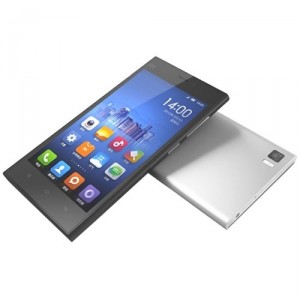“Dark horse” challengers, seemingly coming from nowhere to overset the established order of things, are not unknown in the electronics business – in fact, Apple Inc. (NASDAQ:AAPL) itself has occupied that role several times in the past during its rise to its current eminence. Today, a Chinese smartphone maker, Xiaomi, is looking to achieve something of the same left-field success by providing a half-price alternative to Apple’s popular but pricey iPhones.
The new Mi 4 smartphone by Xiaomi was presented to an audience by Lei Jun, the company’s CEO. This 4G-capable mobile communications device retails for $320, slightly less than half the cost of an iPhone 5S at $650. The Mi 4’s screen measures 5 inches and offers 1080p resolution at a far lower cost than that offered by its Cupertino-designed rival. The 2.5 GHz processor is a Snapdragon manufactured by Qualcomm, Inc.
 In what is either an amusing example of coincidence, or an equally amusing instance of imitation, Mr. Jun appears onstage to present the Mi 4 in a dark sweatshirt, blue jeans, and white sneakers, a costume that is almost a precise match for Steve Jobs’ preferred outfit while presenting new Apple (AAPL) products to the world. It is also quite possible that Mr. Jun used the costume as a deliberate, tongue in cheek “tribute” to the Apple founder, since he also cracked jokes, such as stating that “even our white color is whiter” than the iPhone’s.
In what is either an amusing example of coincidence, or an equally amusing instance of imitation, Mr. Jun appears onstage to present the Mi 4 in a dark sweatshirt, blue jeans, and white sneakers, a costume that is almost a precise match for Steve Jobs’ preferred outfit while presenting new Apple (AAPL) products to the world. It is also quite possible that Mr. Jun used the costume as a deliberate, tongue in cheek “tribute” to the Apple founder, since he also cracked jokes, such as stating that “even our white color is whiter” than the iPhone’s.
Xiaomi has won explosive growth during its four years of existence, rising to sixth place in the global smartphone market. Though it is unlikely to make headway in affluent countries such as the United States or the EU nations, it has a solid business strategy for establishing itself in the BRIC countries (Brazil, Russia, India, and China). The company avoids expensive offline sales, relying instead on Internet purchases and user recommendations to build its empire.
Apple (AAPL), of course, is also pushing its expansion in the BRIC countries as part of its strategy to continue robust growth. With Xiaomi’s plans to sell 60 million handsets over the course of 2014, these two ambitious firms are clearly on a collision course for one of the largest markets still remaining on the planet. Apple has quality, an established reputation, and an elite aura on its side, while Xiaomi brings low cost, good quality, and a sense of youthful vigor to the contest. The outcome of the struggle is still uncertain, but the prize is a market containing nearly half the world’s population and several rapidly expanding economies.



